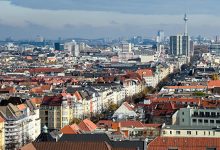Population of Aden: A Comprehensive Overview
Aden, a vibrant port city in Yemen, has long been a hub of historical significance and economic activity. Its strategic location along the Gulf of Aden has made it a center for trade, culture, and geopolitical importance. Understanding the population dynamics of Aden offers insight into the city’s growth, challenges, and its role in the broader Yemeni and global context.
Historical Context of Aden’s Population Growth
The history of Aden is intrinsically tied to its population trends. As one of the world’s oldest inhabited cities, Aden has been a melting pot of cultures, attracting settlers, traders, and travelers for centuries. During the 19th and early 20th centuries, when Aden was under British colonial rule, the city experienced significant population growth due to its development as a key port in the British Empire. Migrants from South Asia, the Horn of Africa, and the Arabian Peninsula contributed to its diverse demographic makeup.
The city’s population fluctuated with the tides of history, including periods of economic prosperity, conflicts, and political changes. Post-independence in 1967 and the establishment of South Yemen marked a period of rapid urbanization. However, the unification of North and South Yemen in 1990 and subsequent conflicts impacted the city’s population dynamics significantly.
Modern Demographic Overview
The current population of Aden is estimated to be approximately 1.2 million, making it one of Yemen’s largest cities. The population density varies across the city’s districts, reflecting differences in infrastructure, economic activity, and social conditions.
Population Distribution by Districts
Aden is divided into several districts, each with unique characteristics:
- Crater District: Known for its historical significance and bustling marketplaces, Crater is densely populated and a commercial hub.
- Al-Mualla: This district serves as a key residential and commercial area, attracting a mix of middle-class families and business professionals.
- Tawahi: Historically a British colonial area, Tawahi has a smaller population compared to other districts but remains vital due to its ports and tourism.
- Al-Mansoura: A more modern district, Al-Mansoura is characterized by planned residential areas and a mix of urban populations.
Aden’s diverse districts reflect a blend of modernity and tradition, with communities comprising various ethnic and cultural backgrounds.
Factors Influencing Aden’s Population
Aden’s population is shaped by several factors, including:
- Urbanization: The city’s role as a commercial and administrative center has attracted rural migrants seeking better economic opportunities.
- Conflict and Displacement: The ongoing Yemeni civil war has significantly influenced Aden’s demographics. The city has become a refuge for internally displaced persons (IDPs), leading to population surges in certain districts.
- Economic Opportunities: Despite challenges, Aden’s ports and businesses continue to attract workers, contributing to its population growth.
- Emigration: Political instability and economic hardship have prompted many residents to emigrate, balancing the city’s natural population growth.
Challenges Facing Aden’s Population
Aden’s growing population presents several challenges:
- Infrastructure Strain: The city’s infrastructure, including water supply, electricity, and healthcare, struggles to meet the needs of its residents.
- Unemployment: High unemployment rates have led to economic hardship, particularly among the youth.
- Housing Shortages: The influx of IDPs has increased demand for housing, often leading to informal settlements and overcrowding.
- Environmental Concerns: Rapid urbanization and industrial activity have raised concerns about pollution and environmental degradation.
Cultural and Social Aspects
The population of Aden is renowned for its cultural richness. The city’s residents include a mix of Arabs, South Asians, and Africans, reflecting centuries of trade and migration. Arabic is the predominant language, and Islam is the primary religion, with Sunni Muslims forming the majority.
Aden’s social fabric is marked by a strong sense of community and resilience. Festivals, markets, and traditional practices remain integral to daily life, despite the challenges posed by conflict and economic hardship.
Future Projections
Population projections for Aden depend heavily on the resolution of Yemen’s ongoing conflict and the city’s economic recovery. With peace and stability, Aden has the potential to reclaim its status as a thriving port city, attracting investment and fostering population growth. However, continued instability could exacerbate existing challenges, leading to further emigration and displacement.
Conclusion
The population of Aden is a testament to its historical and cultural significance. Despite facing numerous challenges, the city remains a symbol of resilience and diversity. Understanding Aden’s demographic trends offers a lens into its past, present, and future, highlighting its importance as a pivotal city in the Arabian Peninsula. Addressing the city’s challenges and leveraging its strengths will be key to ensuring a sustainable and prosperous future for its inhabitants.





